Slow art: Analyzing art in an image-saturated age
This blog post is part of our teaching and research resource series, which lives on a newly launched resource hub for educators featuring content co-created with your peers. If you’d like to collaborate with us and share your creative teaching and learning ideas—especially those featuring JSTOR and Artstor—please review our guidelines and submit your draft.
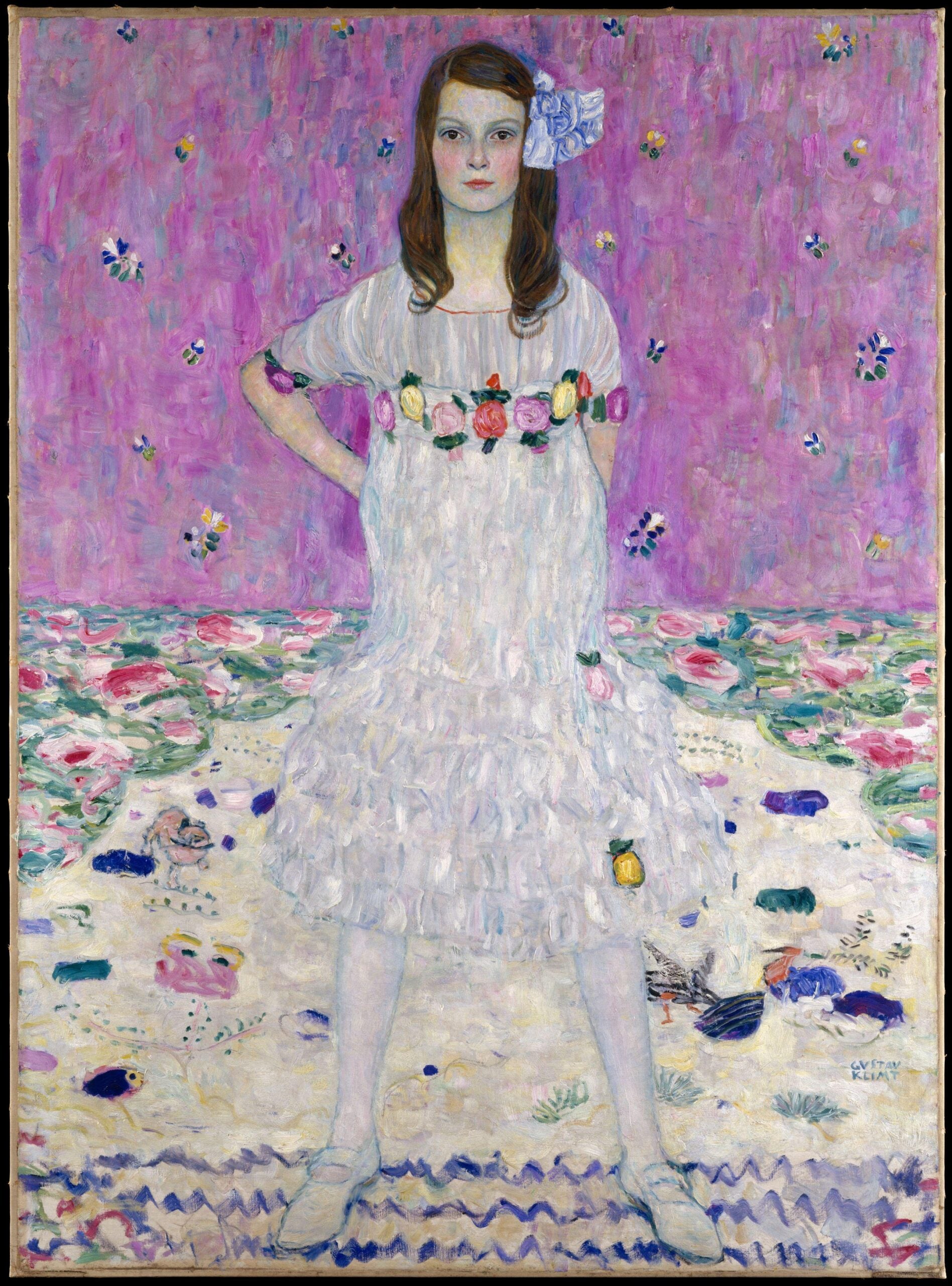
Gustav Klimt. Mäda Primavesi (1903–2000). 1912-13. Oil on canvas. The Metropolitan Museum of Art. https://jstor.org/stable/community.16003849.
Many students at the university or community college level taking art history courses are not art historians, nor do they have any desire to become one; there may be several students each semester who have never stepped foot in an art museum. As an art history lecturer, I have students come through my introductory art history courses with majors ranging from computer science, to gerontology, to business management. Teaching art history, therefore, is a balancing act: instructors like myself should be able to present relevant artistic and art historical theories, knowledge, and methods while also keeping students engaged.
My students may not know what chiaroscuro is, but they can view a Caravaggio painting and feel the drama of heavily contrasting light and shadow. They may not be able to identify the cultural context in which Art Nouveau was created, but they’ve seen Klimt’s artworks in a movie. Teaching students and encouraging them to relate to artworks, and to engage with visual media in a more methodical way is key to keeping students interested, and to giving them the skills to slow down and combine visual and conceptual ways of thinking. These skills are very much translatable to other courses, majors, and career paths.
We live in an age when students at most ages or educational levels are looking at hundreds, if not thousands, of images every day on social media. They watch movies with a podcast playing in their headphones at the same time; they scroll for hours on their phones and only absorb a small portion of the images they see. This is not unique to students, of course, but
the goal of this project is to specifically engage students with imagery on a deeper and more critical level than they may be used to.
This student research project is meant to foster the growth of art historical knowledge by pairing students and having them create a mock museum or gallery “exhibition” by using resources from JSTOR and Open Artstor on JSTOR. These are invaluable resources both for faculty and students doing any sort of research project, especially those combining imagery, and primary and secondary sources like this one.
This project is specifically a way for “Gen Z” and other digitally aware students, who are among the first generation of “digital natives,”1 to engage with art historical theories, ideas, and methods with their specific learning styles in mind.
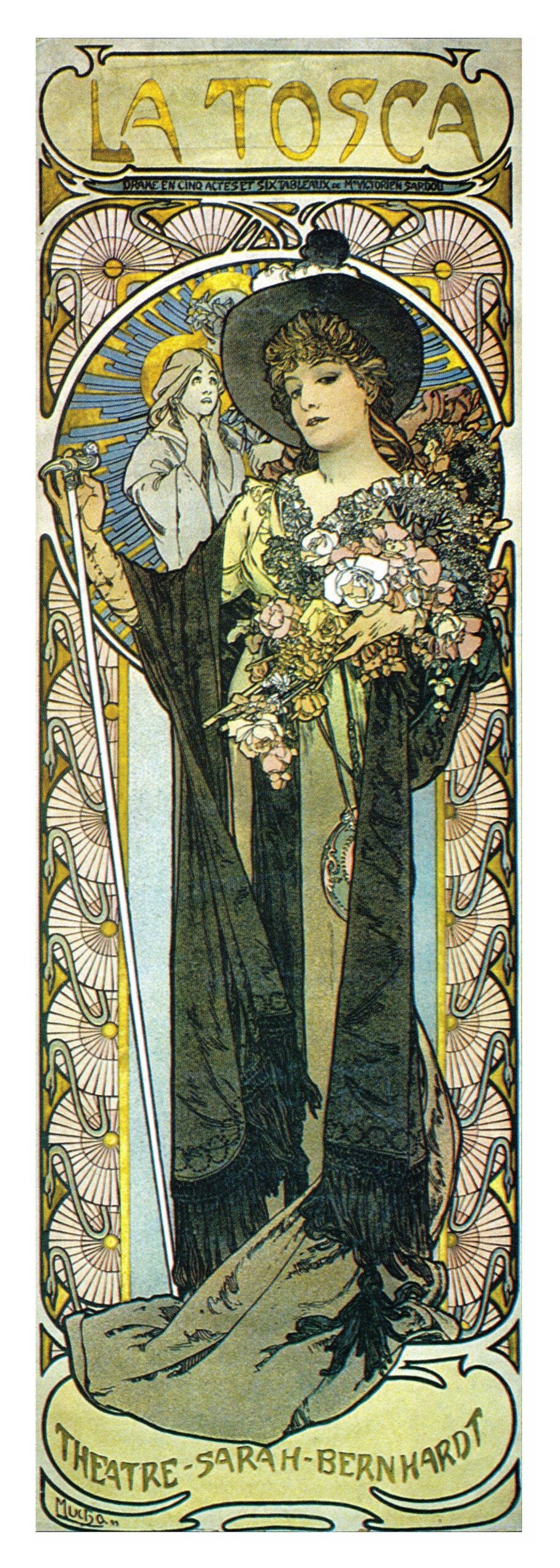
Alphonse Mucha. La Tosca. 1899. Color lithograph. https://jstor.org/stable/community.14367624.
Based on personal feedback from my previous courses, many students show a preference for activities with visual elements, rather than traditional research papers or analytical essays. This project works within that creative framework to familiarize them with art historical methods of thematic analysis, visual or formal analysis, and museum studies; all of these skills are foundational to strong academic research and writing, and are also useful for future art historians or art history majors to create a base knowledge of skills they will further develop through upper division coursework.
This project will also foster an environment where students will look at art carefully, rather than simply browsing artworks for a brief time. This encourages students to think deeply and analyze the visual elements of each artwork they look at. By creating an “exhibition,” students will look at artworks beyond the surface level. In an age where students are constantly bombarded with imagery, this project is designed to help them differentiate between image and artwork by giving them the space to appreciate and analyze artworks individually, via formal or visual analysis, rather than as a potentially insignificant piece of their larger image-saturated daily activities.
Research project
In this project, students are paired in groups of two or three, depending on class size. They are tasked with the following:
- Students will choose an artist from a relevant unit (example: Art Nouveau) with accessible artworks on Open Artstor.
- From the Open Artstor homepage, students will search for an artist by first and last name.
- Students will be given in-class time to browse images and choose their artist.
- Each student will choose at least one (maximum three) artworks from their chosen artist.
- They will choose images based on themes discussed in class, as well as themes (whether visual, contextual, or theoretical) that they find most interesting.
- Art Nouveau example: Theme of organic form (visual/formal); theme of arts-and-crafts practices in “high art” (medium/technique/visual).
- Students will login to JSTOR with their free personal account, and use JSTOR and Artstor via the university library to compile images and relevant research articles in their personal Workspace.
- Workspace will help students narrow down their choice of images by allowing them to save several potentially relevant artworks, compile images with their classmates for their final “exhibition,” and collect potentially relevant research articles from JSTOR (see image examples above this resource).
- In their groups, students will each choose one artwork and one article from their Workspace files. This will be aggregated into a virtual museum “exhibition” in which they group their works based upon an agreed theme.
- Students should consider the following:
- Why were you drawn to their chosen pieces or movement?
- What stuck out about these pieces specifically, over other works by the same artist(s)?
- Is there a specific visual or thematic element that drew you to them?
- What connection do your chosen artworks have to reading and/or lecture material from class?
- Students will then creatively tie in their individually chosen works in their groups of two or three by doing the following:
- Writing a brief biography of each artist chosen for the “exhibition” in one PowerPoint slide per artist for clarity (see below for relevant PowerPoint slide templates).
- Compiling a PowerPoint presentation with their chosen artworks, also one slide each, with an accompanying “wall text.”
- The “wall text” will include the following identifying information:
- Artist, title of artwork, medium, and date made.
- A brief summary of the artwork, its historical and/or cultural context, and how it relates to the group’s chosen theme.
- This is a relevant guide on how to write a wall text.
- Students will present their “exhibition” to the class in a 5-10 minute presentation. This presentation should address the considerations from point 5 and should also include 1-2 slides explaining the thematic ties between the pieces.
- This should go beyond simply stating “these pieces are all thematically tied because they’re part of the same movement.” How does that movement group these artworks? How are these specific artworks related beyond surface level observation? This is where any academic resources saved to their Workspace will be utilized.
- Students will also turn in a group bibliography or works cited page in MLA format with all Workspace articles used.
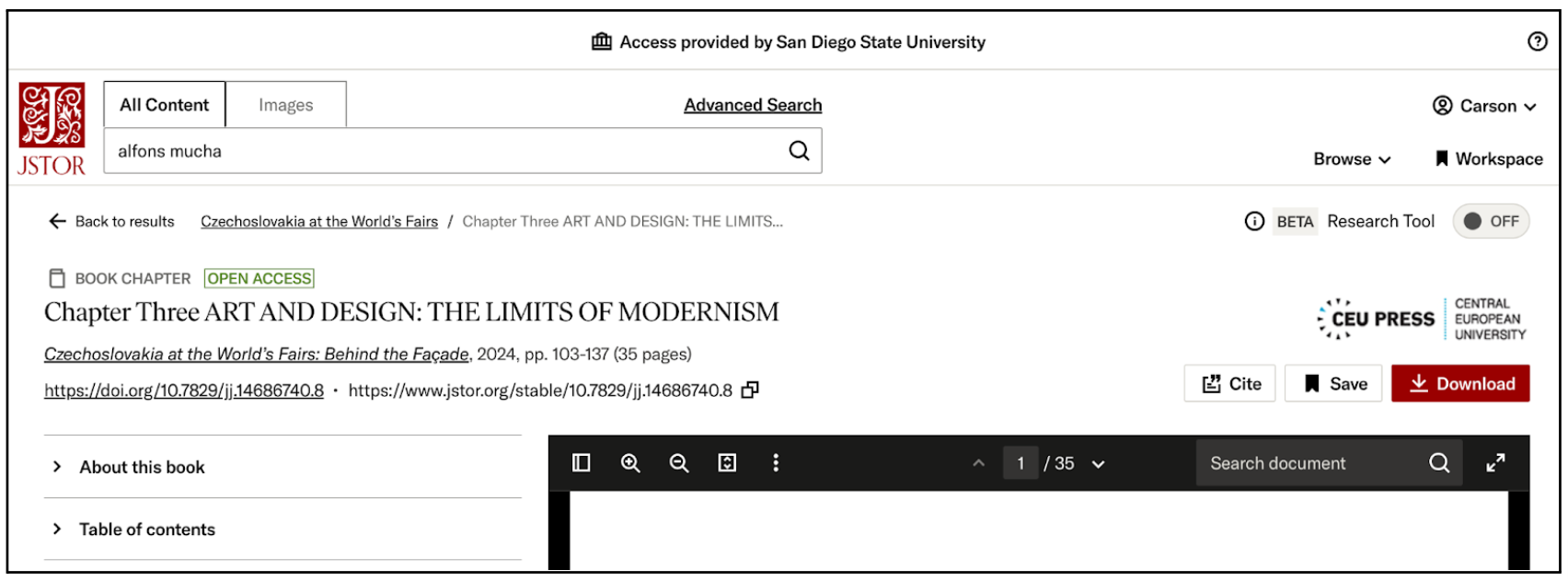
To save an article on JSTOR through the Workspace, students will log in via a free personal account and click “save” at the upper-right corner of the article preview.
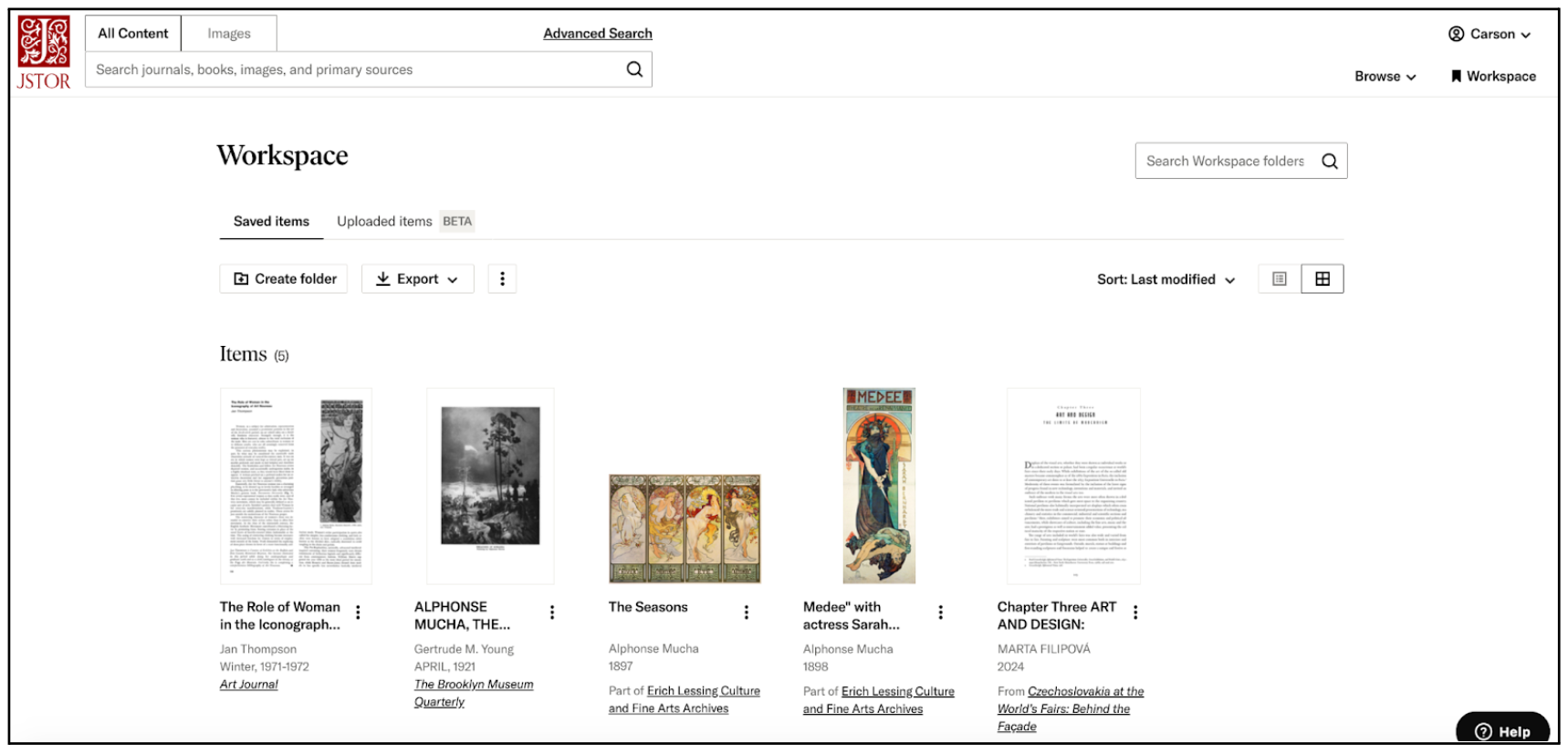
A Workspace example in progress with saved articles and images from JSTOR and Artstor on JSTOR regarding Alphonse Mucha.
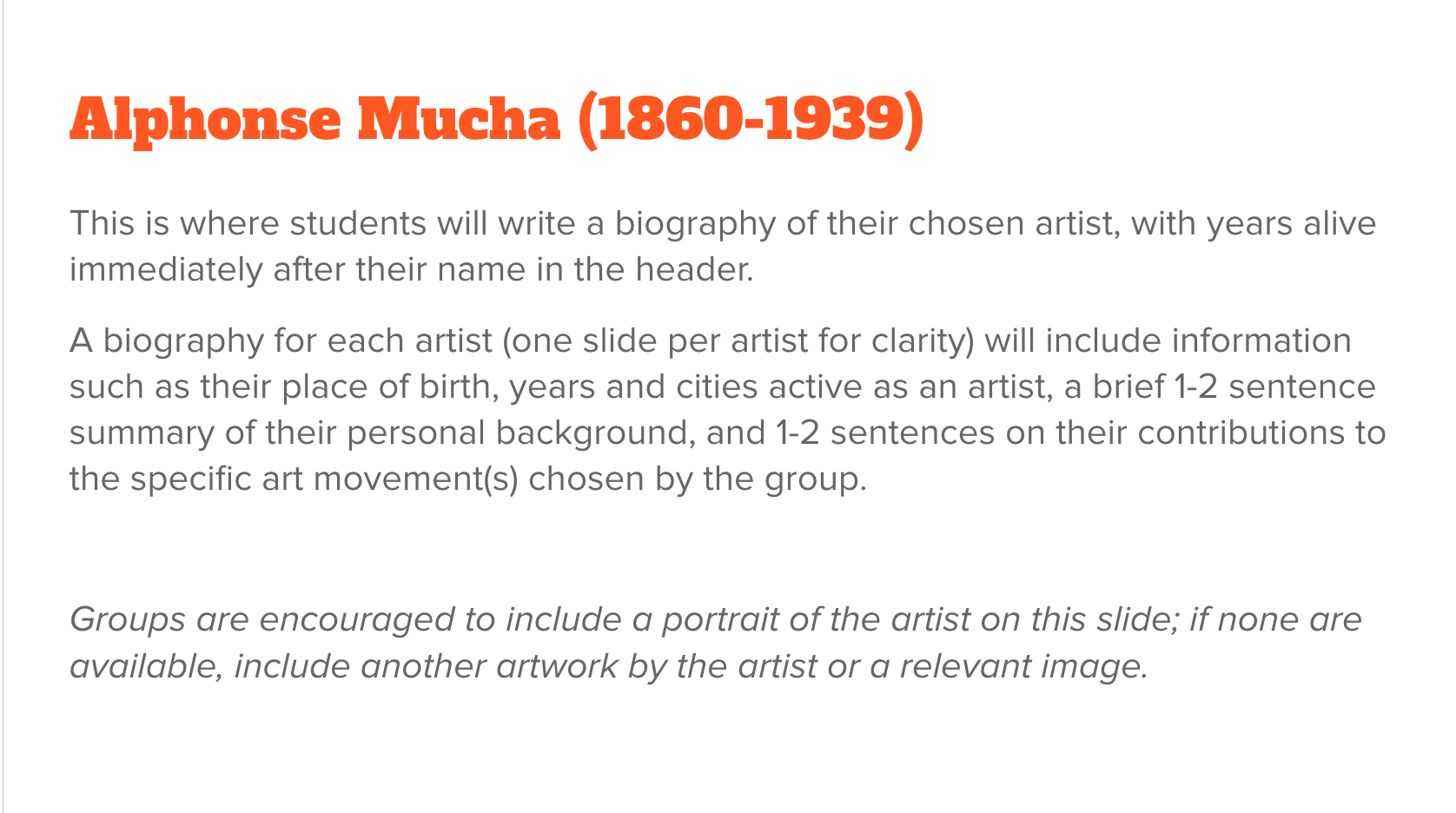
Template with instructions for an artist biography PowerPoint slide.
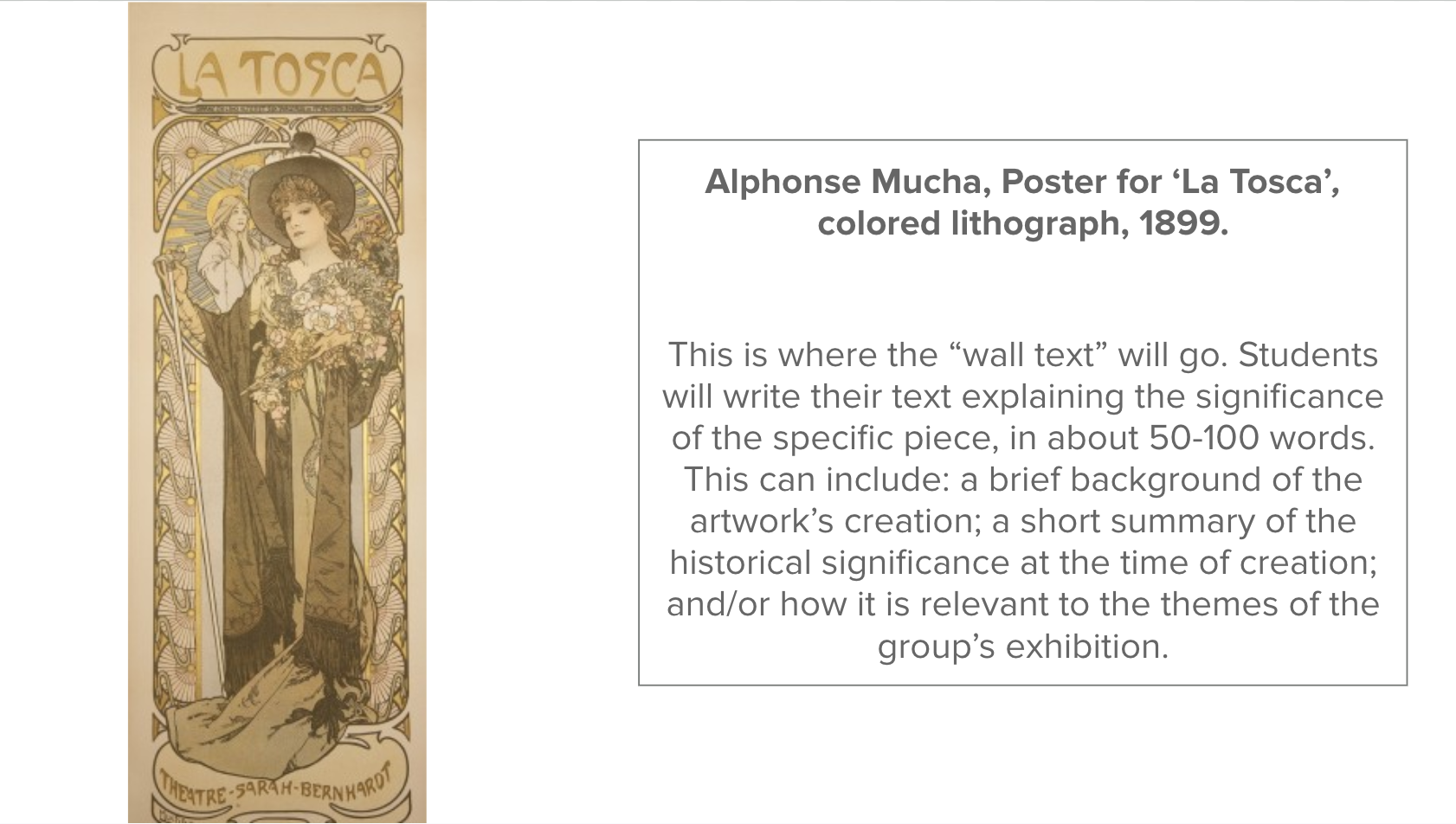
Template with instructions for an artwork PowerPoint slide with accompanying wall text.
1 John A. Huss, “Gen Z Students Are Filling Our Online Classrooms: Do Our Teaching Methods Need a Reboot?,” InSight: A Journal of Scholarly Teaching 18 (July 2023): 101–12, https://doi.org/10.46504/18202306hu.
About the author

Carson Smith is a contemporary art historian dealing in the intersections between art, technology, and politics in the Internet age. She is also a lecturer in the Department of Art History at San Diego State University.